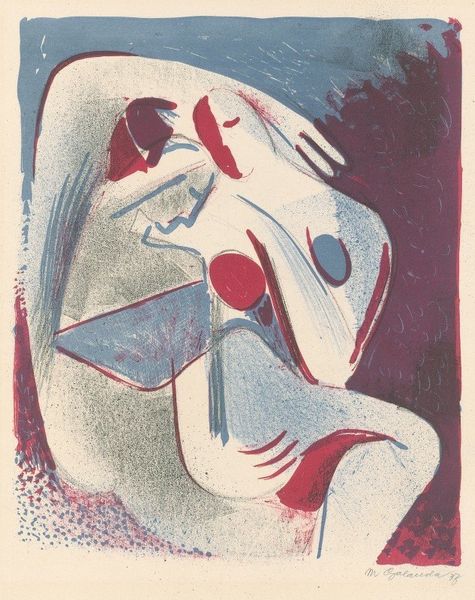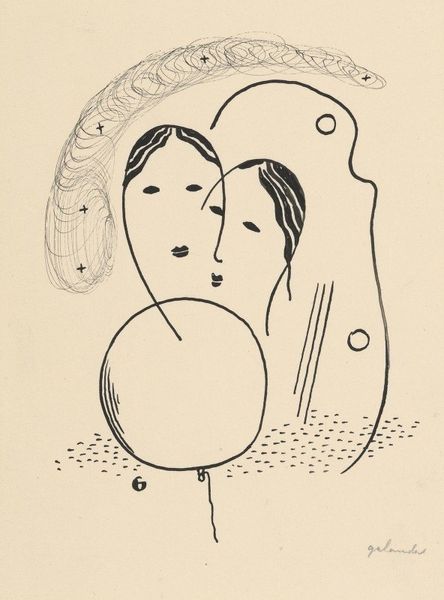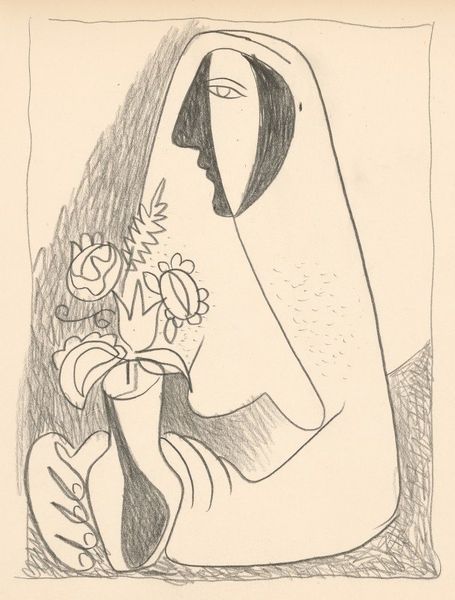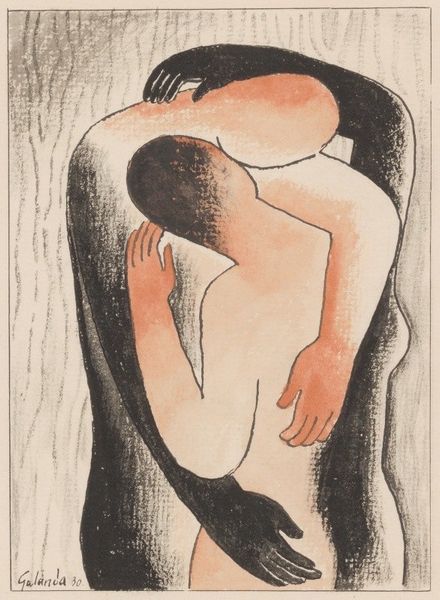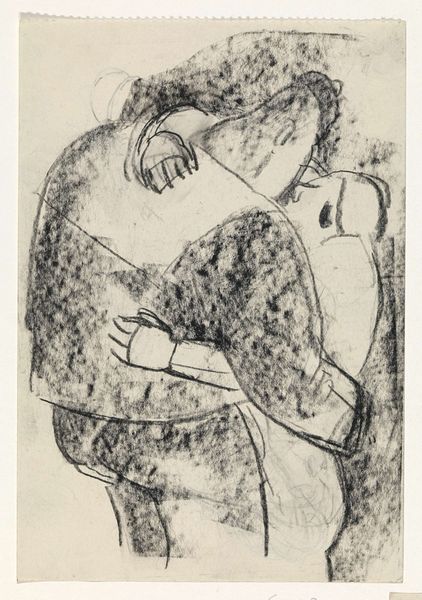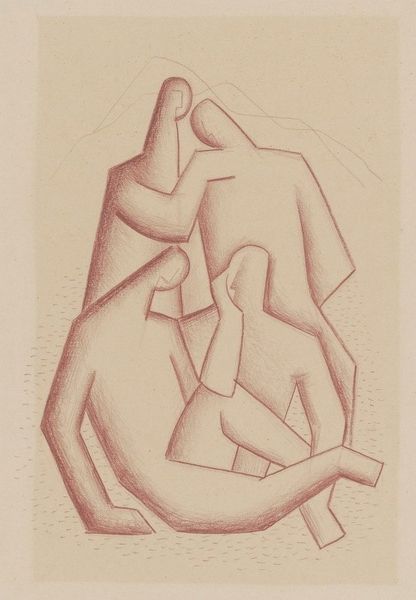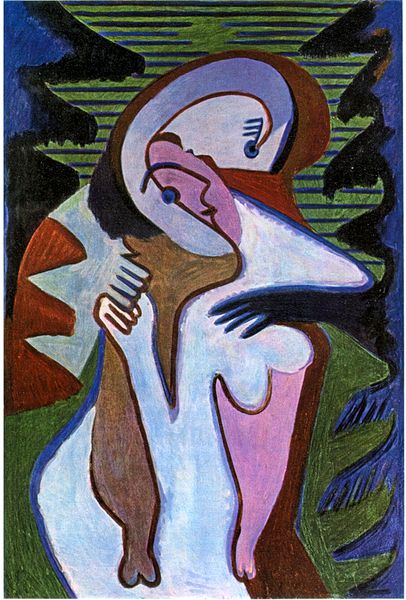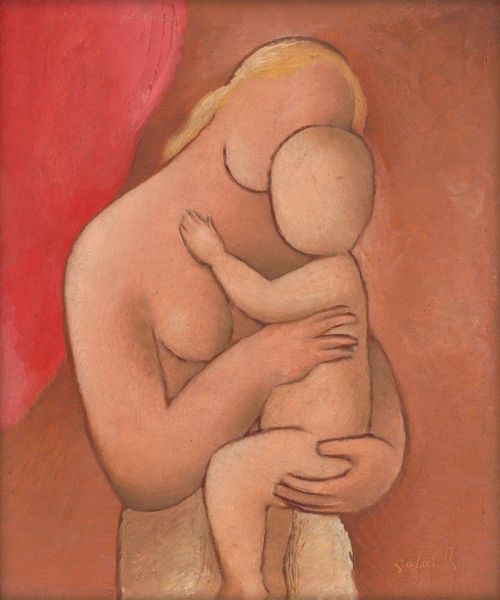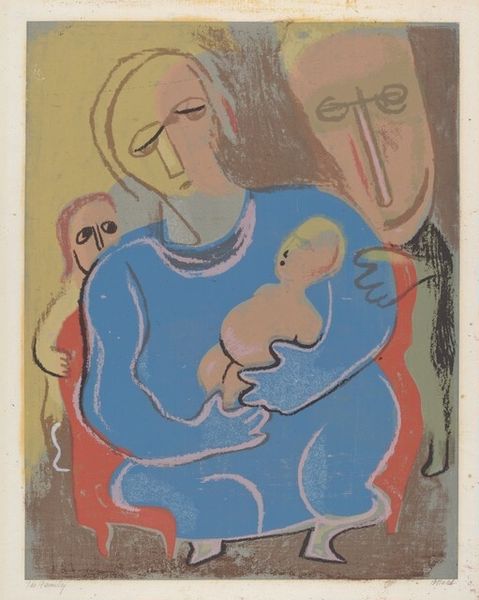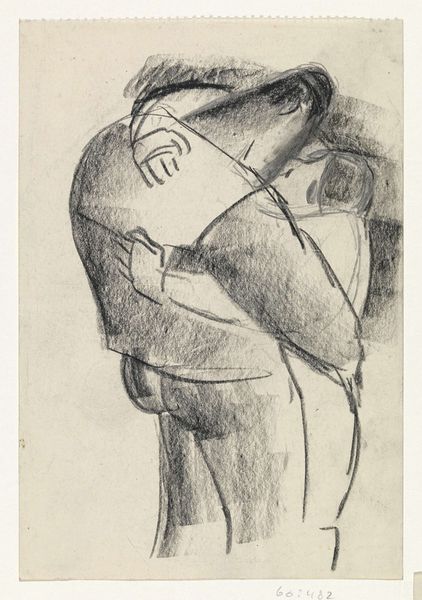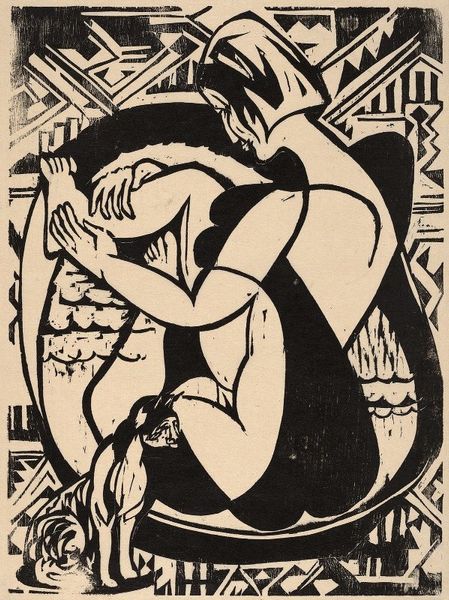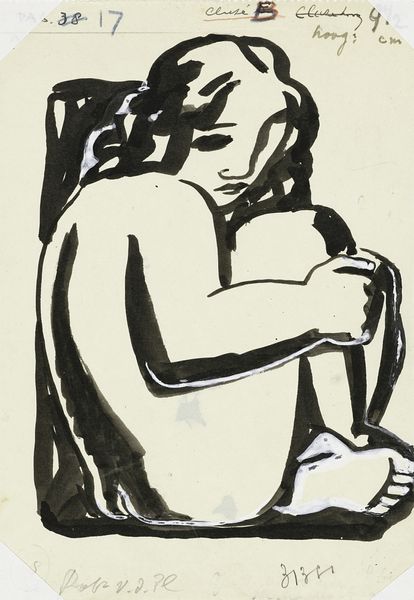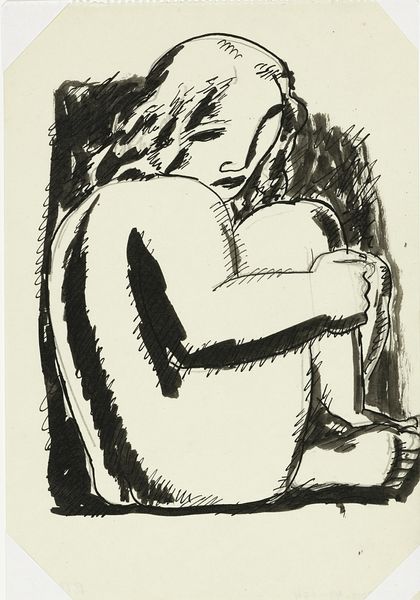
drawing, paper, ink
#
portrait
#
drawing
#
pen illustration
#
old engraving style
#
caricature
#
figuration
#
paper
#
abstract
#
ink
#
geometric
#
abstraction
#
modernism
Copyright: Public Domain: Artvee
Editor: Here we have Mikuláš Galanda's "Girl’s Head" from 1938, rendered in ink on paper. It feels so stark and geometric, almost like a woodcut, despite being a drawing. What’s your read on this work, particularly given its historical context? Curator: Well, immediately I’m struck by its connection to the burgeoning sense of unease in Europe at the time. Galanda, although working within a modernist framework, doesn't shy away from figuration. The image is simplified almost to the point of caricature, and there is a sense of protectiveness, but also oppression perhaps. What do you make of the fact that the woman has her eyes closed and is embracing the little girl? Editor: I notice the closed eyes too. The girl appears pensive, like she’s seeing the world head-on while being shielded. Is Galanda suggesting something about innocence in the face of approaching turmoil? Curator: Precisely. We have to consider this was created on the eve of World War II. The formal austerity echoes the tightening political climate. Do you see any elements hinting at the artistic movements of the time? Editor: Definitely! It echoes Cubist fragmentation, yet it’s distilled through a lens of folk art. It makes me wonder how Galanda positioned himself within those broader artistic conversations. Curator: Exactly. It’s his ability to synthesize avant-garde aesthetics with his own regional experiences. Consider that abstraction, for many Eastern European artists, was a means to subtly critique authoritarianism and project new values. Editor: So, it’s not just a simple portrait. It becomes a statement about a specific place and time, leveraging artistic style as a tool? Curator: Indeed. Galanda offers not just an image but a potent socio-political commentary wrapped in the guise of Modernist aesthetic. Editor: I never would have pieced that all together myself. It gives me a whole new understanding! Curator: That’s the power of art history; illuminating the dialogue between art, artists, and the world they inhabited.
Comments
No comments
Be the first to comment and join the conversation on the ultimate creative platform.
